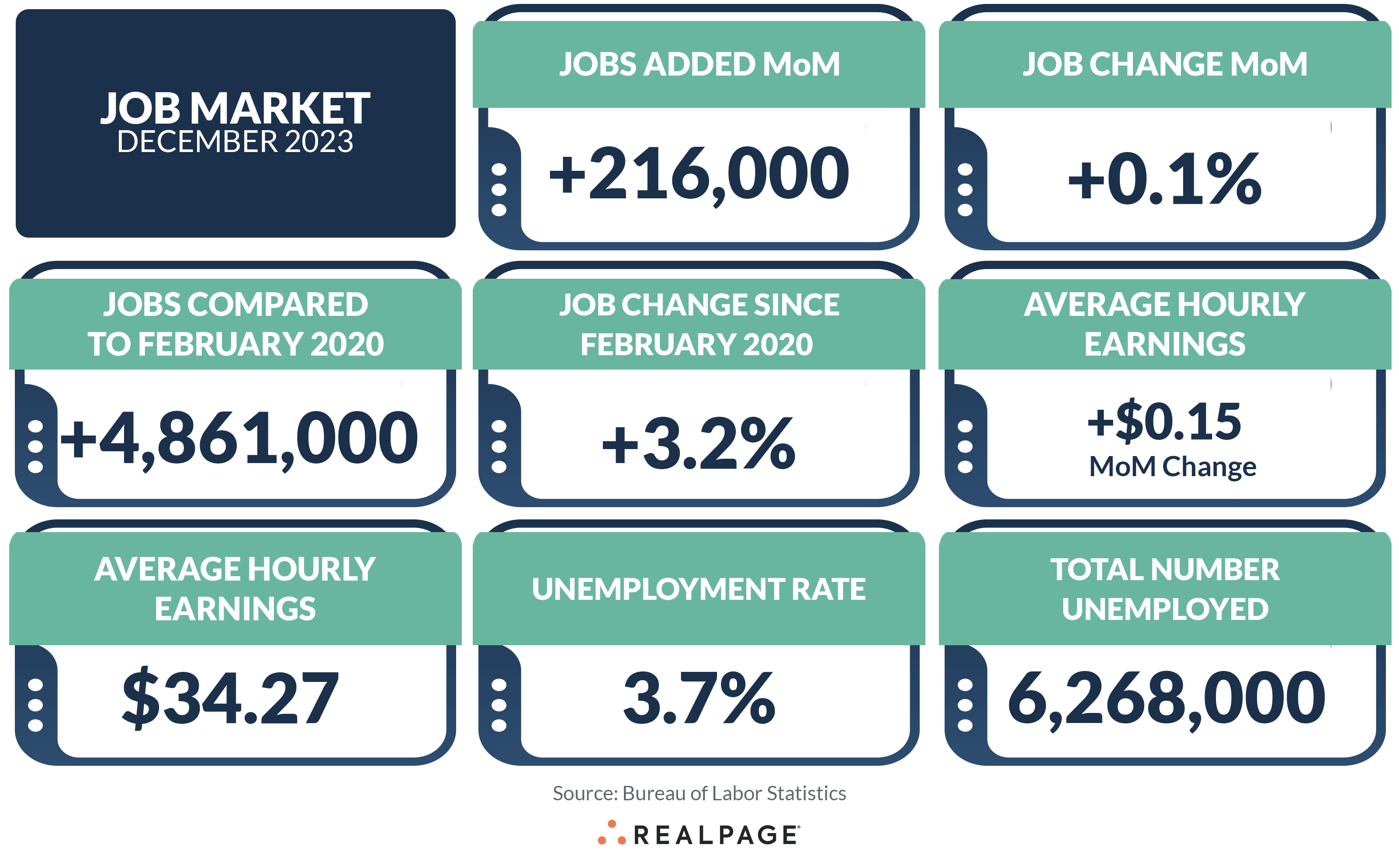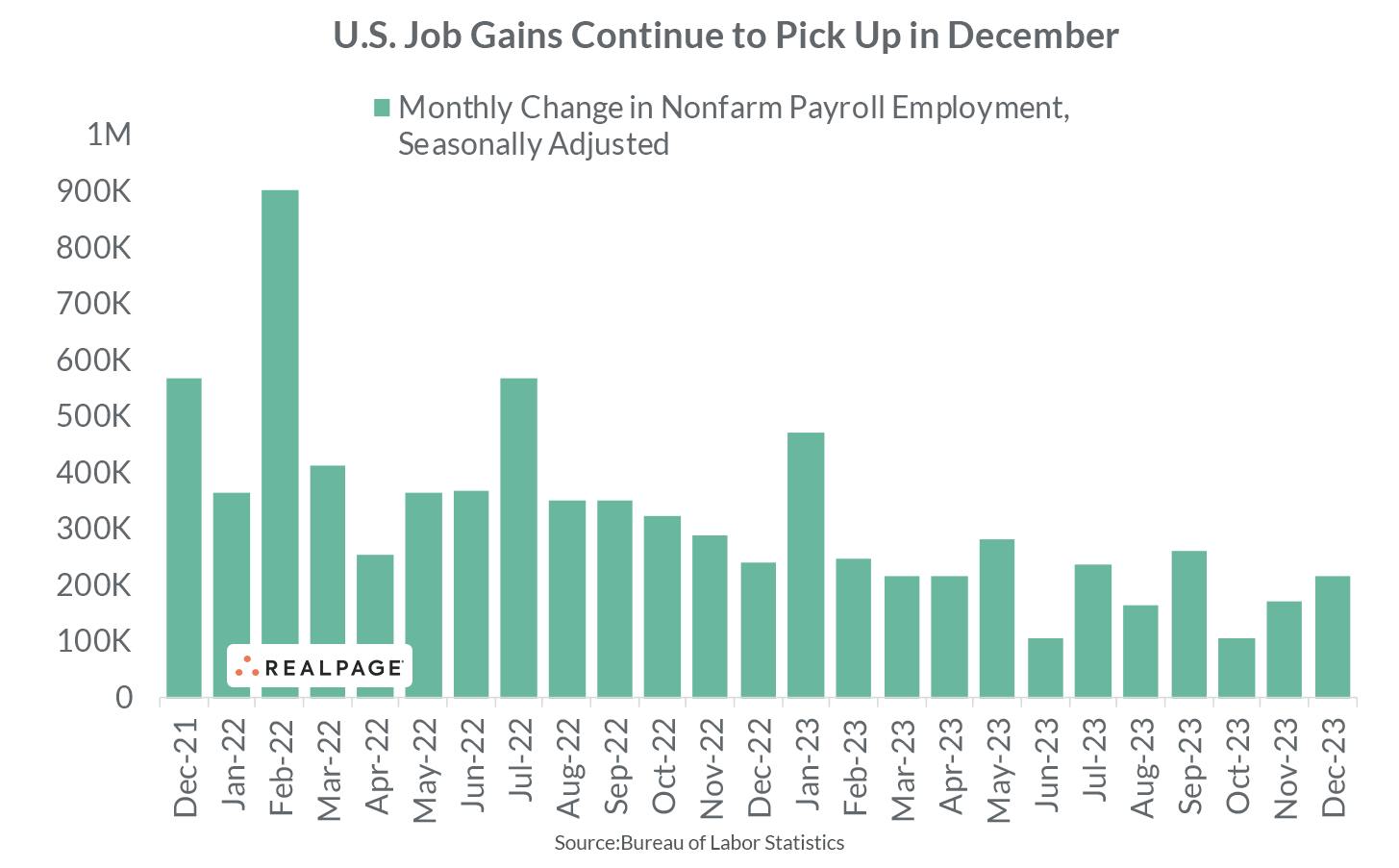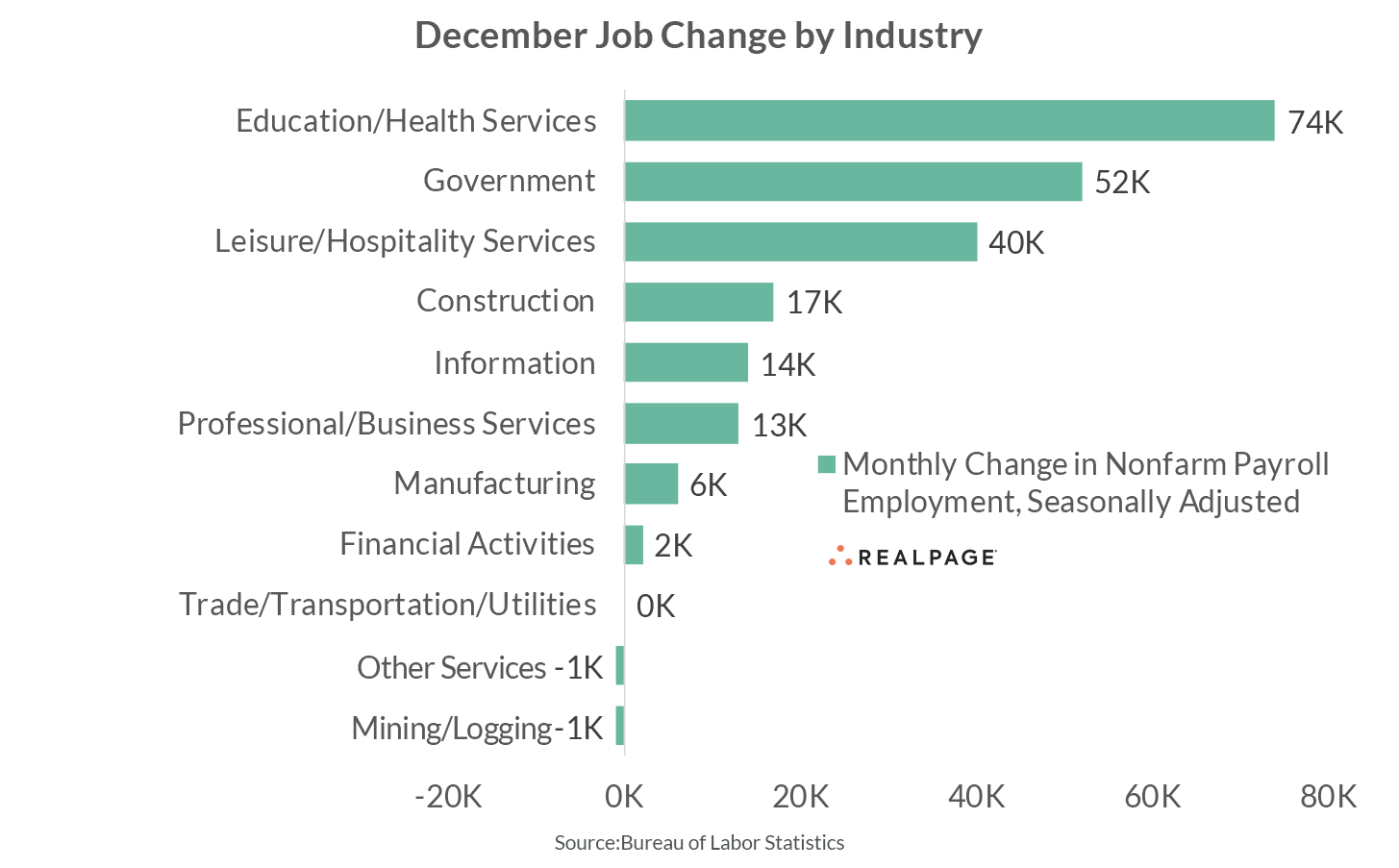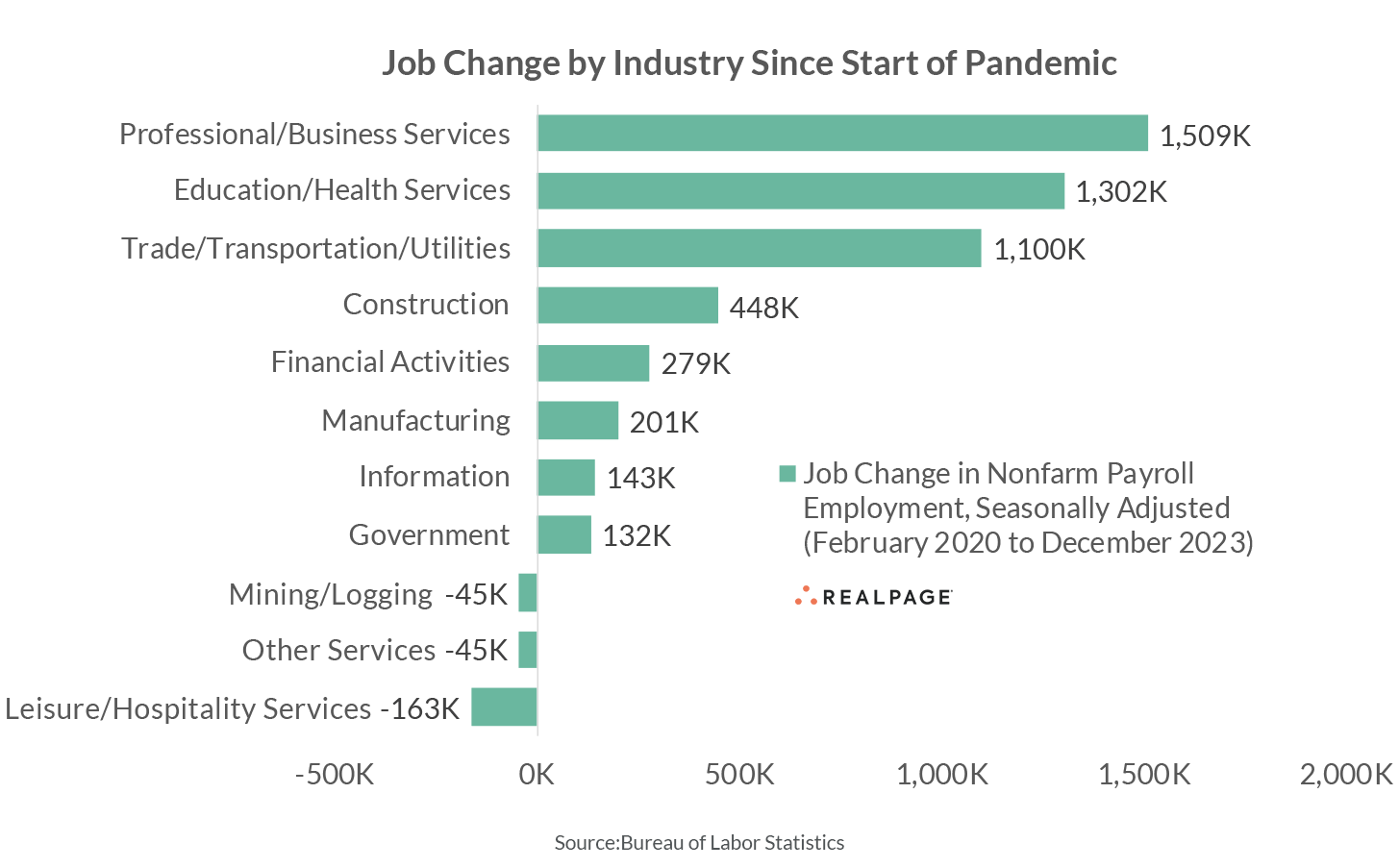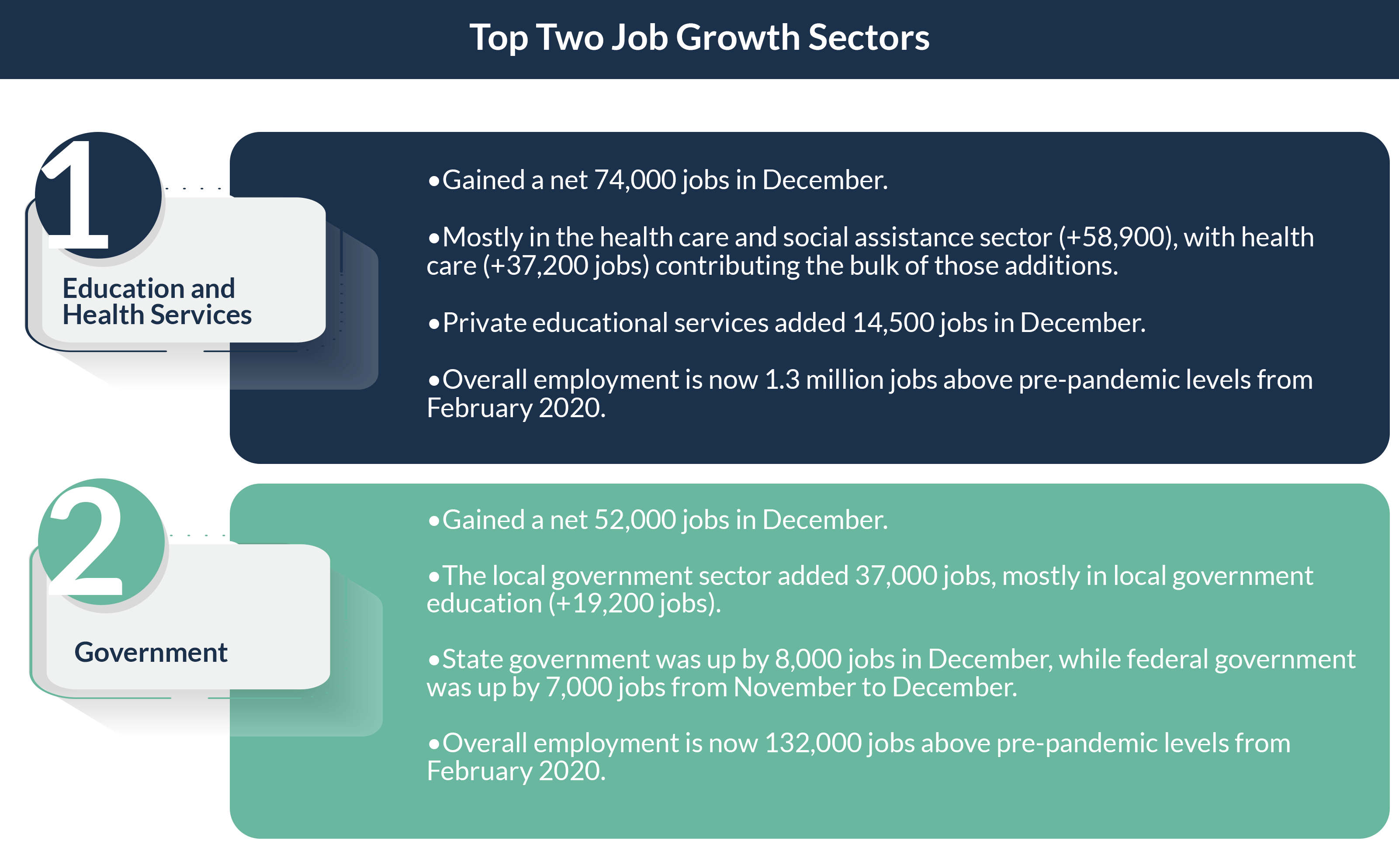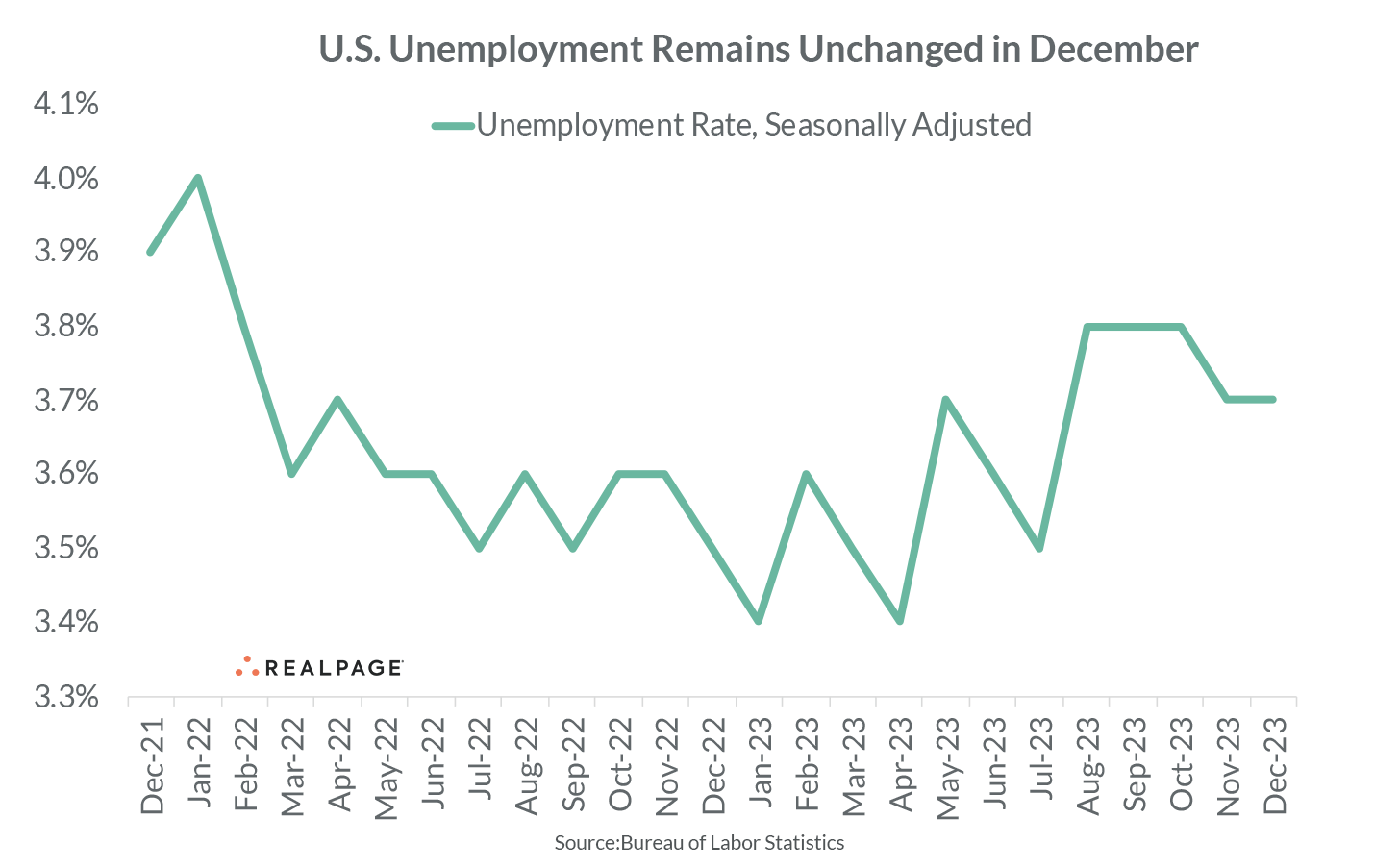U.S. job growth remained stronger – and unemployment was lower – than economists were projecting in December. The labor market has remained robust despite 11 interest rate hikes by the Federal Reserve over the past two years to cool inflation.
Employers added roughly 216,000 workers to payrolls in December 2023, according to the Bureau of Labor Statistics (BLS). That was an improvement over the 173,000 jobs gained in November, but below the monthly gain of 262,000 jobs in September. Still, that recent job gain came in far above what economists were projecting (+160,000 jobs).
Of note: The job counts for October and November were revised considerably lower. Downward revisions to October 2023 data showed 45,000 fewer jobs were added than previously reported, down to 105,000 positions. The November 2023 growth number was also revised down, decreasing by 26,000 jobs to a total of 173,000 positions. With these revisions, employment gains in October and November combined were 71,000 jobs lower than previously reported.
Recent job gains were well below the monthly average of around 399,000 jobs added in 2022 but were ahead of pre-pandemic norms. From 2015 to 2019, the U.S. economy added an average of roughly 190,000 jobs each month.
On an annual basis, the nation gained nearly 2.7 million jobs in December 2023. Although that was the weakest annual gain since March 2021, it was above the average of around 2.4 million jobs added annually from 2015 to 2019.
The U.S. economy has recovered all the net jobs lost during the COVID-19 pandemic. As of December, the nation had nearly 4.9 million more jobs (+3.2%) compared to the pre-pandemic employment level from February 2020.
Jobs by Industry
Job growth in December was seen in eight of 11 major industry sectors. The most notable job base expansion was in the Education and Health Services sector (+74,000 jobs). Solid gains were also recorded in Government (+52,000 jobs), Leisure and Hospitality Services (+40,000 jobs), Construction (+17,000 jobs), Information (+14,000 jobs) and Professional and Business Services (+13,000 jobs). Smaller job gains were seen in Manufacturing (+6,000 jobs) and Financial Activities (+2,000 jobs).
Trade, Transportation and Utilities as a whole recorded no change in job levels from November to December, as job losses in transportation and warehousing were offset by job gains in wholesale and retail trade.
Of the two major industries that lost jobs from November to December, job loss was mild. Mining and Logging and the Other Services sector each recorded a downturn of 1,000 jobs.
Most major industries have recovered all the jobs lost during the COVID-19 pandemic downturn. Professional and Business Services has seen the best recovery, with the recent job count coming in roughly 1.5 million positions ahead of February 2020 numbers. Also well ahead of pre-pandemic norms were Education and Health Services (+1.3 million jobs) and Trade, Transportation and Utilities (+1.1 million jobs).
Alternatively, some of the harder-hit sectors remain below pre-pandemic job counts. Despite recent gains, employment in the Leisure and Hospitality Services sector is still well below pre-pandemic employment counts (-163,000 jobs). Other industry sectors yet to recover all the jobs lost during the COVID-19 downturn include Mining and Logging (-45,000 jobs) and Other Services (-45,000 jobs).
Unemployment
The unemployment rate (U3 or headline unemployment rate, which is seasonally adjusted) was unchanged from November to December, with the rate remaining at 3.7%. That result was better than the 3.8% rate economists were projecting and marked the 23rd consecutive month that the unemployment rate has remained below 4%.
Since February 2022, the unemployment rate has been in a narrow range of 3.4% to 3.8%. At the onset of the pandemic, the unemployment rate climbed to 14.9% in April 2020. Prior to the pandemic, the unemployment rate clocked in at 3.5% to 5.7% from 2015 to 2019, averaging 4.4% during that period. Prior to 2023, the unemployment rate hadn’t registered below 3.5% since 1969.
The total number of unemployed persons in the U.S. registered at roughly 6.27 million in December, down from about 6.26 million in November.
The unemployment rate for adult men (20 years and over) declined 20 bps from November to December, to 3.5%. The unemployment rate for adult women (20 years and older) increased 20 bps to 3.3%. Meanwhile, the unemployment rate for teenagers (16 to 19-year-olds) rose 50 bps from 11.4% in November to 11.9% in December.
Average Hourly Earnings
Average hourly earnings among employees on private nonfarm payrolls rose $0.15 (+0.4%) from November to December. That monthly increase took average hourly earnings to $34.27 in December. On an annual basis, average hourly earnings were up $1.35, a 4.1% increase year-over-year. Overall wage growth is now surpassing rising prices, as the Consumer Price Index (CPI) rose 3.1% in the year-ending November. The Fed’s target for inflation is currently at 2%.
Wage growth over the past year was strong across most major industries. The largest increases in earnings from December 2022 to December 2023 were recorded among workers in Mining and Logging (5.9%), Manufacturing (5.7%), Financial Activities (5%), Construction (4.6%), Professional and Business Services (4.5%) and Trade, Transportation and Utilities (4.5%). The smallest increases were among employees in Education and Health Services (2.5%), Information (3.6%), Leisure and Hospitality Services (3.9%) and Other Services (3.9%).








